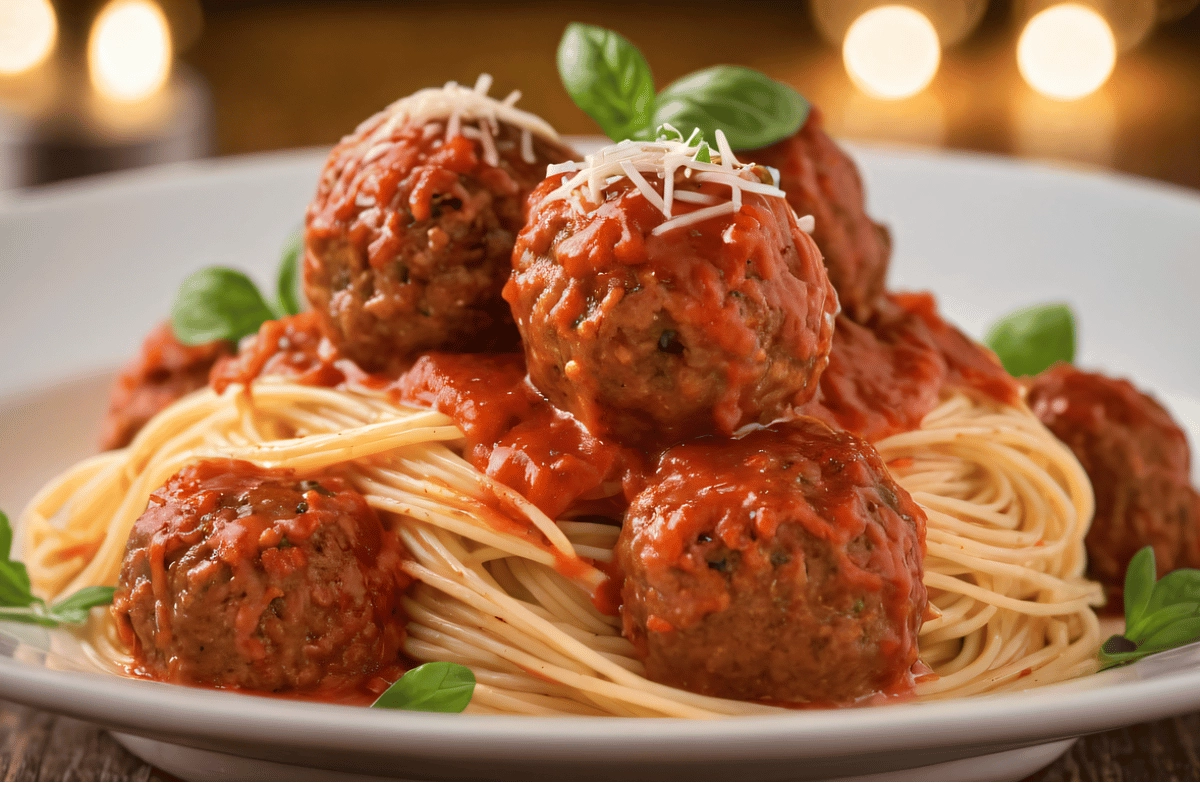Introduction
Unveiling the Secrets of Traditional Italian Meatballs
Ah, Italian meatballs—a simple mention of this dish brings to mind the warm, comforting embrace of Italian cuisine. But what exactly goes into making these savory delights? It’s more than just meat and spices; it’s a blend of tradition, culture, and culinary artistry. In this article, we’ll peel back the layers of history to reveal the origins of Italian meatballs, delve into the key ingredients that give them their distinct flavor, and walk you through the steps to prepare them authentically. Whether you’re a seasoned chef or a curious food enthusiast, understanding the essence of traditional Italian meatballs will surely add a dash of excitement to your cooking repertoire. So, let’s get ready to roll up our sleeves and immerse ourselves in the world of Italian meatballs!
The Origins of Italian Meatballs
A Culinary Journey through Italy’s History
Long before they became a staple in Italian-American cuisine, meatballs, or polpette as they’re known in Italy, had humble beginnings. The concept of meatballs dates back to ancient times, with various cultures around the world developing their own versions. In Italy, however, the story of meatballs is a tale of resourcefulness and culinary innovation.
The Evolution of Meatballs in Italian Cuisine
Originally, Italian meatballs were a way for families to extend their limited supplies of meat. Cooks would combine small amounts of ground meat with breadcrumbs, eggs, and herbs to create a dish that was both filling and flavorful. This practice of stretching ingredients became particularly important during times of scarcity, such as the Middle Ages.
As Italian cuisine evolved, so did the recipe for meatballs. Different regions of Italy began to put their own spin on the dish, incorporating local ingredients and cooking techniques. For example, in southern Italy, meatballs are often made with a combination of beef and pork, while in the north, cooks might use a mixture of beef, veal, and even mortadella.
Despite their variations, the core elements of Italian meatballs have remained consistent: a blend of meats, breadcrumbs for binding, and a mix of herbs and spices for flavor. It’s this simplicity and adaptability that have helped meatballs endure through the centuries and become a beloved part of Italian culinary tradition.
Key Ingredients of Traditional Italian Meatballs
The Essential Components
Delving into the heart of traditional Italian meatballs, we find a symphony of ingredients that come together to create their signature taste. While variations exist from region to region, certain elements remain the cornerstone of this beloved dish.
The Meats: A Blend of Flavors
At the core of Italian meatballs is the meat itself. Typically, a combination of beef and pork is used to achieve the perfect balance of flavor and texture. The beef provides a robust taste, while the pork adds juiciness and depth. In some regions, veal or even a bit of pancetta might be added to the mix for an extra layer of complexity.
Breadcrumbs and Eggs: Binding the Mix
To hold the meat mixture together, breadcrumbs and eggs are essential. The breadcrumbs, often soaked in milk or water, lend a tender texture to the meatballs, preventing them from becoming too dense. Eggs act as a binding agent, ensuring that the meatballs maintain their shape during cooking. For a true Italian touch, using pane raffermo (stale bread) finely ground into crumbs is a traditional choice.
Herbs and Spices: Adding the Italian Touch
What sets Italian meatballs apart are the herbs and spices that infuse them with their distinctive flavor. Garlic, parsley, and Parmesan cheese are classic additions that provide a burst of freshness and umami. A pinch of nutmeg or a dash of red pepper flakes can be added for warmth and a slight kick. The key is to balance these flavors so that no single ingredient overpowers the others.
By understanding the roles of these essential components, you can appreciate the artistry behind traditional Italian meatballs. Each ingredient plays a part in creating a dish that is not only delicious but also a reflection of Italy’s rich culinary heritage.
Preparing Authentic Italian Meatballs
Step-by-Step Guide to Perfection
Creating authentic Italian meatballs is an art that combines tradition with personal touch. Here’s a step-by-step guide to help you craft the perfect meatballs, just like Nonna used to make.
Mixing the Ingredients
Start by combining your ground meats in a large bowl. Add in the soaked breadcrumbs, beaten eggs, minced garlic, chopped parsley, grated Parmesan cheese, salt, and pepper. Gently mix the ingredients with your hands or a fork, being careful not to overwork the mixture, as this can lead to tough meatballs.
Shaping the Meatballs
Once the mixture is well combined, it’s time to shape your meatballs. Wet your hands slightly to prevent sticking, and roll the mixture into balls, about the size of a golf ball. Place the formed meatballs on a baking sheet lined with parchment paper. If you prefer smaller meatballs for soup or larger ones for a main dish, adjust the size accordingly.
Cooking Methods: Frying vs. Baking
There are two traditional methods for cooking Italian meatballs: frying and baking.
- Frying: Heat a generous amount of olive oil in a skillet over medium heat. Add the meatballs in batches, being careful not to overcrowd the pan. Fry them, turning occasionally, until they are evenly browned on all sides and cooked through. This method gives the meatballs a crispy exterior and a juicy interior.
- Baking: Preheat your oven to 375°F (190°C). Arrange the meatballs on a baking sheet and bake for 20-25 minutes, or until they are cooked through and slightly browned. Baking is a healthier option and is ideal for making larger batches.
Once cooked, you can serve the meatballs with your favorite pasta and sauce, in a sub sandwich, or simply enjoy them on their own. Buon appetito!
Serving and Pairing Italian Meatballs
Complementing Flavors for a Complete Meal
Once you’ve mastered the art of making authentic Italian meatballs, the next step is to serve them in a way that enhances their flavors. Here’s how to turn your meatballs into a meal that’s sure to impress.
Traditional Sauces and Pasta Pairings
The classic way to serve Italian meatballs is with a rich tomato sauce, also known as marinara sauce. The acidity of the tomatoes complements the savory meatballs perfectly. Simmer the meatballs in the sauce for a few minutes before serving to allow the flavors to meld together.
When it comes to pasta, spaghetti is the traditional choice, but other long pasta like linguine or fettuccine works well too. For a heartier meal, pair the meatballs with a thicker pasta like rigatoni or pappardelle, which can hold up to the robust sauce.
Complementing the Meal
To round out the meal, serve your meatballs and pasta with a side of crusty Italian bread for mopping up the delicious sauce. A simple salad dressed with olive oil and balsamic vinegar provides a fresh contrast to the rich meatballs.
For those looking to avoid alcohol, pairing the meal with a sparkling Italian soda or a glass of chilled lemon water can provide a refreshing balance to the flavors.
Variations of Italian Meatballs
Regional Twists on a Classic Recipe
While the basic ingredients of Italian meatballs remain consistent, different regions of Italy have put their own unique spin on this classic dish. Here are some regional variations that showcase the diversity of Italian cuisine:
Meatball Varieties Across Italy
- Sicilian Meatballs (Polpette alla Siciliana): In Sicily, meatballs are often flavored with pine nuts, raisins, and a hint of cinnamon, adding a sweet and nutty dimension to the dish.
- Roman Meatballs (Polpette alla Romana): In Rome, meatballs might be simmered in a white wine sauce, giving them a lighter, more delicate flavor compared to the traditional tomato-based sauce.
- Neapolitan Meatballs (Polpette alla Napoletana): In Naples, meatballs are sometimes made with a mixture of beef and pork, and they’re often larger in size, served as a main course rather than an accompaniment to pasta.
- Venetian Meatballs (Polpette alla Veneziana): In Venice, you might find meatballs made with ground fish or seafood, offering a unique twist on the traditional meat-based recipe.
Each region’s version of meatballs reflects its local ingredients and culinary traditions, making Italian meatballs a diverse and versatile dish. Whether you stick to the classic recipe or explore these regional variations, you’re sure to find a version that delights your taste buds.
Conclusion
Celebrating Italy’s Beloved Meatballs
Italian meatballs, with their rich history and delightful flavors, are a testament to Italy’s culinary prowess. Whether served in a comforting bowl of pasta, tucked into a crusty sandwich, or enjoyed as a standalone dish, they bring a taste of Italian tradition to any meal. By understanding the key ingredients, regional variations, and cooking techniques, you can create authentic Italian meatballs that are sure to impress. So, gather your ingredients, roll up your sleeves, and celebrate the art of Italian cooking by making a batch of delicious meatballs. Buon appetito!

